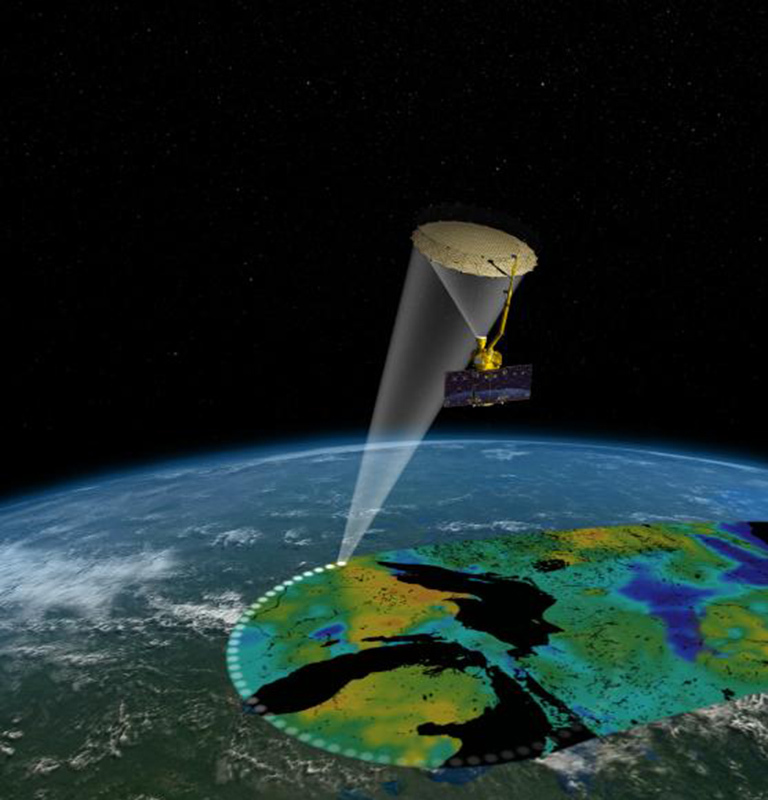News | August 4, 2015
NASA's SMAP Releases First Calibrated Data

Artist's rendering of the Soil Moisture Active Passive (SMAP) satellite. The width of the region scanned on Earth's surface during each orbit is about 620 miles (1,000 kilometers).
In a major milestone, scientists have completed their initial calibration of the two instruments on NASA's new Soil Moisture Active Passive (SMAP) satellite observatory, launched Jan. 31.
The work paves the way for upcoming activities to validate SMAP science data against ground measurements, leading to the planned release of SMAP soil moisture data products to the international science community this fall and the release of fully validated data next spring.
The calibration activities reveal SMAP's radar calibration stability to be within 1 decibel, and SMAP's radiometer calibration stability within 1 Kelvin. The calibration work allows SMAP data users to familiarize themselves with partially calibrated, or "beta" data, while the full calibration activities are being completed. The "beta-level" radiometer and radar data products were made available for public release July 31 through the National Snow and Ice Data Center and the Alaska Satellite Facility. The fully calibrated data will be released in early November of 2015.
SMAP's minimum three-year mission will map global soil moisture and detect whether soils are frozen or thawed. The mission will help scientists understand the links between Earth's water, energy and carbon cycles; help reduce uncertainties in predicting weather and climate; and enhance our ability to monitor and predict natural hazards such as floods and droughts.
SMAP radiometer data have been processed to map microwave emissions from Earth's surface, expressed as brightness temperatures in Kelvin and at a horizontal spatial resolution of about 25 miles (40 kilometers). SMAP's radar began regular operations on April 13, but stopped transmitting July 7 due to an anomaly that is still being investigated by the SMAP team at JPL. The available radar data have been processed to produce coarse-resolution (3.1-by-18.6 mile, or 5-by-30-kilometer) global data products and high-resolution (0.6-mile or 1-kilometer) data products over land surfaces and coastal oceans.
For more information about NASA's Earth science activities, visit:
Updated 8/6/15 at 6:09 p.m. EDT/3:09 p.m. PDT to correct resolution numbers in last paragraph.
Alan Buis
Jet Propulsion Laboratory, Pasadena, California
818-354-0474
Alan.Buis@jpl.nasa.gov




